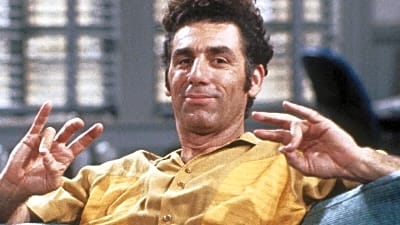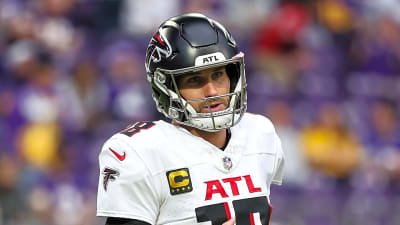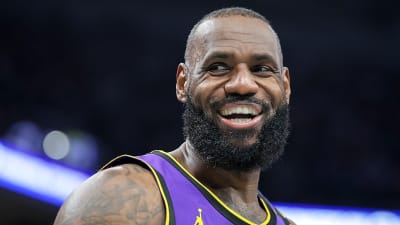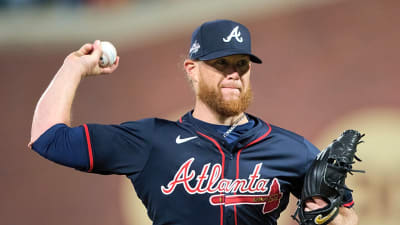
Boy did that trade to move up a couple spots catch everyone off guard, eh? Not only did Blackhawks General Manager Kyle Davidson slide up a bit in the draft, he made the deal a month before the Draft and gave up a pair of second-round picks, too.
The next logical question is if Davidson even plans on using that 18th overall pick–or if he’s going for something bigger. Fairly or not, the clock on Kyle Davidson and his front office officially started at the conclusion of this season because as Davidson pointed out, next year cannot be a repeat of 2023-24.
Chicago Hockey Now has looked at first-round pick hits, foundational building, and argued the importance of having a stellar top six next season. Here’s a closer look at whether picking at 18 holds more value both short and long term for the Blackhawks–or if trading to get immediate help is the better route.
Davidson, Blackhawks Need To Get Connor Bedard Help
Connor Bedard needs more help on the top line besides Philipp Kurashev. Even putting Lukas Reichel up there didn’t help and the Blackhawks muddled through a season where Bedard was often the only one generating offense game in and game out. So using that 18th overall pick to grab a guy who can help now makes sense knowing that Blackhawks need a jump from last year’s 53-loss season.
Now, should they go after Patrick Kane after purportedly shutting the door on a reunion last season–that changes things a bit. But is it enough with just him added?
Nope. Detroit Hockey Now has Kane likely leaving the Red Wings but even if he heads to the Blackhawks, he’ll have a much different looking team than the one he had in Detroit. But there are a number of high end unrestricted free agents eligible to hit on July 1st, too. So if Davidson opts to go that route as contract talks bleed into the NHL Draft, making a selection at #18 makes sense. Adding even a couple of the top names (Sam Reinhart, Jake Guentzel, Steven Stamkos), which Chicago can afford, would allow prospects more time to develop.
But cap room will not be forever. And the clock ticks a season closer to Bedard’s entry-level deal running out. The Blackhawks won their first Cup with Jonathan Toews and Patrick Kane in the final season of their entry-level deals. It also facilitated the cap hell that necessitated a massive sell off following that Cup win.
Davidson has vowed to not abuse the cap space, and has been steadfast in building the right way. So if indeed he makes a couple signings in FA and then deals the pick, what should the parameters be?
Contention Window and Age Both Key Factors in NHL Ready Talent
The first names that come to mind are Mitch Marner and Martin Necas, both bonafide NHL talents who would help immediately. Both are in the age range of what Chicago needs in terms of them growing with a young team.
From an analytical standpoint, 27 years old is the absolute peak of what they should be including that 18th overall pick with. Why? Presuming any player they acquire will want a longer term deal, something Kyle Davidson will only consider for the right player and right price.
Alex Vlasic received six years–which will make him 28 when it expires. Marner just turned 27–so a rich six-year deal would bring him to 33. Necas is 25–being 31 by a hypothetical contract’s end.
Now, age isn’t everything, and it certainly is dependent on player. But what also must be factored in is the wear and tear on the body that goes into playoff runs. Marner hasn’t seen much outside of a second round visit last year, with 57 games to his playoff career. Necas has 59 playoffs games to his name–but it’s Marner’s numbers who pop out in points (50-39) while equal to Necas in goals.
When it comes to both Necas and Marner, though, it will boil down to what both suitors would like. Anything involving them would not only need that sweetener of a draft pick, but also someone else who could slot into help. It’s where the Blackhawks come in short with other teams involved. Either one being dealt would create a sizable hole on their depth chart.
To surrender that pick, it’ll need to be the right price, age, and production. But it’ll also need to be a perfect match for the other side–which if they’re looking for ready-to-go talent–could be hard for the Blackhawks to match.
So What Are The Odds If Kyle Davidson Stays At #18?
Here’s where it gets interesting. Dobber Prospects had an article that should be bookmarked by every draft junkie hockey fan. In it, it shows that just 37% of those picks playing at least 99 games are in the first-round. CHN took a look at that breakdown further a month ago, where of those picks made from 17 to the end (which changed as expansion took hold), the numbers weren’t as high with hits as a manager would want.
So since 2022, how many of those picks have been in the NHL from #18 until the end? A look with the table below:
As time marches on, one would expect the numbers to get better in terms of longevity and production. The 100-point marker is certainly subjective, knowing that both defensemen, forwards, and goalies were taken in this spot. But the threshold also holds a key to production that exceeds what one would expect in that slot. The 2015 Draft yielded the highest clip of at least 100 games, seeing 85% of those picks play 100 games or more in the NHL.
But what this table is designed to show is that unless a David Pastrnak is unearthed, a big time player who will contribute often and at high levels will not be for at least a couple of seasons. That puts the Blackhawks, who need to cobble talent together quickly, waiting longer than they’d like.
Dealing that pick to a team needing cap room and boasting a ready-made roster can use that time. There’s already examples of it from the table.
Wyatt Johnston, for example, is an absolute steal at 23, and is has 106 points as a defenseman, putting up numbers in two full seasons that rival Cale Makar. Johnston is certainly the exception to the rule here. For sure, ridiculous steals will occur from #18-32.
It’s likelier to take more time before that player produces at that rate–or finds his way in the lineup. One other curious fact: Of those top performers, only Mercer clocked in at 18. Every other notable player was taken in the 20’s. Another fact for Davidson to take note of.
Plenty of Options To Weigh
Kyle Davidson maintained he’d maximize the pick in a way that will best serve the Blackhawks.
“I think it would be a disservice to close yourself off ‘and just be like ‘we’re just gonna make this pick ‘ or ‘just gonna try and move up’,” Davidson said. “Whether it’s move back, move up, stick, see what that pick’s value is on the market for another prospect, an established NHLer, whatever the case may be–that’s all up for evaluation. If one option arises that is clearly the highest value, that’s what we’ll do.”
Other names beyond Necas and Marner are out there, and how they fit into the Blackhawks timeline and lineup ultimately rests on Davidson’s view. But if their goal is to get better at a faster clip, they’ll be waiting a few years if they stay at #18. Yes, the Johnston’s and Pastrnak’s exist–but they’re just two out of 111 picks in that time frame to stand out as such.
The odds then, aren’t there for the Hawks’ timeline if they look to make a push next season. So with help on the way, Kyle Davidson should be all ears when it comes to improving the depth on the organization via trade.
Davidson has proven savvy before–and likely will again.
More must-reads:
- Stanley Cup Final takeaways: Oilers may have shifted series with stunning comeback
- Cowboys bungling Micah Parsons situation could cost them more money
- The '50-goal NHL seasons since 2000-01' quiz
Customize Your Newsletter
 +
+
Get the latest news and rumors, customized to your favorite sports and teams. Emailed daily. Always free!








